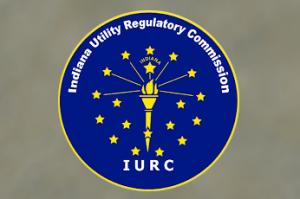Indiana Court Upholds Increase Granted IPL in 2016

Finding that the advocacy groups who had appealed an Indiana Utility Regulatory Commission electric rate decision were attempting to foist socio-economic policy-making duties on the commission when such actually belong within the realm of the state General Assembly, the Court of Appeals of Indiana has denied the appeal and affirmed the commission’s judgment in full. At issue was a 2016 rate order that granted Indianapolis Power & Light Company (IPL) $29.6 million in rate relief. That proceeding had been somewhat unusual in that it consolidated a general rate case docket with one looking into facility safety and reliability matters following several manhole cover explosions within IPL’s service area (see Letter No. 4264).
The appeal of that rate decision was led by Citizens Action Coalition of Indiana, which was joined by five other locally based groups that promote expanded social programs for limited-income consumers and economically disadvantaged communities. In petitioning for the commission’s decision to be set aside, the appellants accused the commission of failing to provide detailed findings as to the impact of a newly approved declining block rate structure on the elderly and African-American citizens as well as on conservation efforts. They also objected that the commission had rejected their proposals for a minimum subsidy of 25% for qualifying low-income ratepayers and a mandatory reporting requirement for service interruption data.
The complainants alleged that the commission had not adequately explained how it arrived at the conclusions it did. In fact, the appellants said, the evidence of record actually supported the positions they had maintained in the proceeding. That is, the groups argued, the final rates and charges set forth in the order cannot be deemed just and reasonable because the commission had not addressed head-on their questions about the disproportionate economic impacts of the new rate tiers on certain economically challenged consumers.
The court, however, noted that state law gives the commission broad discretion in determining what level of rates meets the standard of being just and reasonable. The court stated that it had reviewed the record on its own and found the commission’s final action to be properly supported by the evidence therein.
The court told the appellants that the burden of proof had been on them to show that the record contained insufficient evidence to justify the commission’s findings. It was not enough, the court held, for the groups to demonstrate that the evidence also could be cited in support of their positions.
The court elaborated that it could find nothing in state law requiring the commission to specifically assess the impact of new rate designs on certain distinct customer groups. The court said that the commission’s sole responsibility was to assure that IPL’s rates would be just, reasonable, and nondiscriminatory.
According to the court, to require the commission to make separate findings of fact as to rate impacts on every special interest group would be tantamount to transforming the nature of every rate-making proceeding into a “broad socio-economic inquiry.” But, the court ruled, such concerns, while valid, have traditionally been treated as resting exclusively within the province of the state legislature, not the commission. Citizens Action Coalition of Indiana, Inc. et al. v. Indianapolis Power & Light Co. et al., Court of Appeals Case No. 93A02-1604-EX- 804, Apr. 5, 2017 (Ind.Ct.App.).



